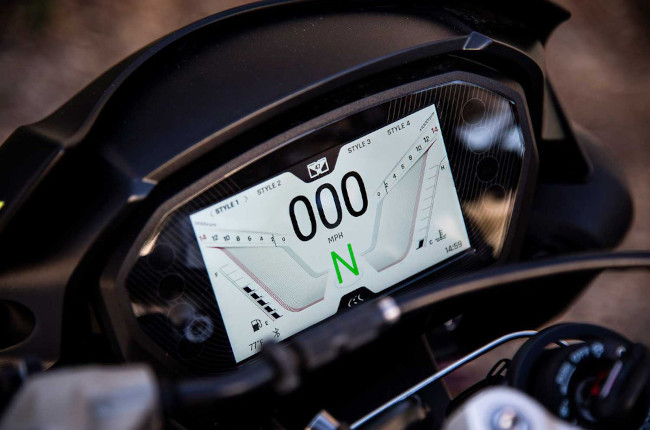How does traction control work, and do you really need it?
This high-tech safety feature is now found on more beginner-friendly bikes – let’s take a closer look at its inner workings.

Motorcycles today have reached new heights in safety and technology. Many of the advanced features you find on production bikes actually originated on the racetrack. What started as cutting-edge technology aimed at squeezing every ounce of performance from race machines has now made its way to street bikes, prioritizing rider safety. Prominent examples of this transition include riding modes, anti-lock braking systems (ABS), and traction control systems. These technologies represent a compelling fusion of racing innovation and everyday road safety, making modern motorcycles not only exhilarating but also remarkably safe rides.
Traction control, once reserved for premium motorcycles, is now becoming increasingly common on beginner-friendly models like the KTM 390 Duke and CFMOTO 450 NK. This shift in accessibility raises an important question: what exactly is traction control, how does it function, and is it a must-have feature for all riders? Let’s dive into the technical aspects of traction control, and determine if it’s a feature you really need on your motorcycle.
How does traction control work?

Traction control on motorcycles is like a guardian angel for riders, ensuring they stay upright and safe, especially in tricky conditions. Picture this: you're cruising down a wet, slippery road, and you twist the throttle a bit too aggressively. Without traction control, your rear wheel might start to spin out of control, leading to a potential skid or even a crash – perhaps a lowside, or even worse, a nasty highside.
That's where this nifty technology steps in. It monitors your bike's wheel speed and intervenes when things get dicey. When the system detects one wheel spinning faster than it should (usually the rear one), it gently reduces engine power or applies the brakes, giving you a better chance of regaining control. It's all about striking the right balance between power and grip, helping you navigate those less-than-ideal riding conditions with confidence.
Not all traction control systems are created equal

Modern performance bikes are often equipped with what’s known as an Inertial Measurement Unit (IMU) which gives the bike spatial awareness. This means it’s able to tailor technology like ABS and traction control depending on your lean angle and speed. So-called lean-sensitive traction control on motorcycles takes the safety game up a notch. Unlike traditional traction control that mainly monitors wheel speed, this tech factors in the motorcycle's lean angle, enhancing precision and control.
When you're mid-corner, banking into a curve, and you apply too much throttle, the system senses your lean angle and intervenes smartly. It might reduce power or apply brake force to specific wheels, not only preventing wheel spin but also helping you maintain your line through the turn.
So, do you really need traction control?

The short answer to this is no. However, having this safety feature is particularly useful if you’re a beginner rider just learning the ropes of throttle management. It’s especially useful if you ride a torquey or powerful motorcycle. Nevertheless, experienced riders may prefer to do away with the safety feature by switching it off, as traction control also prevents the bike from doing things like sliding the rear wheel and popping wheelies. That being said, switching off traction control unlocks your bike’s full power, and it’s definitely not recommended for inexperienced riders onboard powerful machinery.
Latest Features
-
Last-minute Christmas gift ideas for your rider friends and family / Featured Article
Struggling to think of gift ideas for your motorcyclist friends and family? Read on to get some inspiration this gift-giving season.
-
Ride a naked sportbike? Get these 5 upgrades first / Featured Article
Here’s a quick list of 5 upgrades to your naked sportbike to enhance your riding experience.
-
Motorcycle 101: The inner workings of a slipper clutch / Featured Article
Slipper clutches are awesome as they make for more forgiving downshifts and a lighter clutch lever. Let’s take a closer look at them and see how they work.




